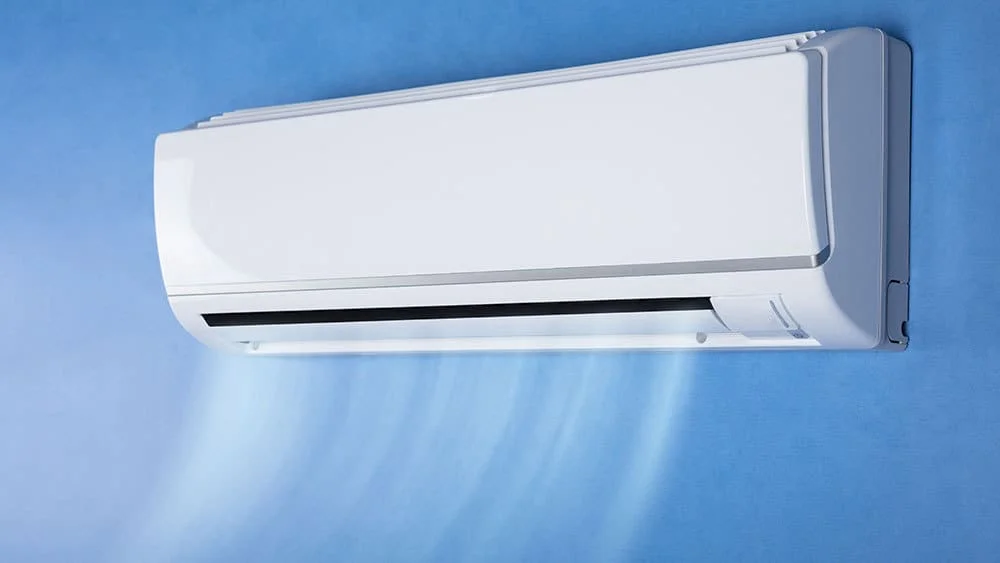
Key Takeaways
- A ductless heat pump both heats and cools your home, maintaining a comfortable environment throughout the year.
- Mini-split ACs cost higher upfront, but they are cost-effective in the long run.
- Ductless heat pumps are more energy-efficient as they eliminate energy losses associated with ductwork.
With rising energy costs and increasing environmental awareness, ductless heat pumps offer a sustainable, cost-effective alternative to traditional systems. Unlike ducted systems, they deliver conditioned air directly to individual areas in your home, eliminating the energy losses often associated with ductwork. The best part is they provide both heating and cooling, keeping the indoor environment comfortable all year round.
The blog will dive deep into everything you need to know about ductless heat pumps: how they function, their pros and cons, and how to make them smart. Moreover, it will explore how to choose the best system for your home and the frequently asked questions regarding these systems.
Whether you’re building a new home or retrofitting your current space, a ductless heat pump might be the upgrade you’ve been looking for.
- What Is a Ductless Heat Pump & How Does It Work?
- Types of Ductless Heat Pumps
- Advantages & Disadvantages of Ductless Heat Pumps
- Making Your Ductless Heat Pump Smart
- Efficiency of Ductless Heat Pumps
- Choosing a Ductless Heat Pump for Your Home
- Is a Ductless Heat Pump the Right Option for Your Home?
- Frequently Asked Questions
- Are Ductless Heat Pumps Worth It?
What Is a Ductless Heat Pump & How Does It Work?

A ductless heat pump consists of an outdoor unit and an indoor unit. They are connected via a power cable, refrigerant line, suction tubing, and condensation drain line.
How Does a Ductless Heat Pump Cool?
- The cooling process begins in the indoor unit, which consists of evaporator coils.
- Warm air from the room is pulled into the indoor unit, where it flows across the evaporator coils.
- The refrigerant in the coils absorbs the heat, and the resulting cool air is blown indoors.
- The warm air is passed over the condenser coils in the outdoor unit, which then expel the heat outside. This cools down the refrigerant, and it cycles back into the indoor unit to start the cooling process again.
- During the cooling process, the refrigerant changes from a liquid to a gaseous substance and then back to a liquid, which helps in the heat transfer process.
- The cooling cycle will continue till your desired room temperature is achieved.
Related: Heat Pump vs. AC: Which One Is the Ideal Fit for Your Home?
How Does a Ductless Heat Pump Heat?
In winter, the whole cooling process is reversed. Your heat pump extracts heat from the outside air, which is dispersed indoors to achieve your ideal room temperature. The heat pump switches its mode using the reversing valve. Here’s how you can switch modes from AC to heat.
- The outdoor air is passed over the condenser coils.
- The refrigerant inside the coils absorbs heat from the outdoor air.
- The warmed refrigerant then moves to the compressor, where it becomes even hotter.
- Next, the heated refrigerant travels to the indoor unit and passes over the indoor coil.
- The indoor evaporator coil transfers the heat to the air inside your home.
- The cooled refrigerant travels back to the outdoor unit to start the heating process again.
Components of Ductless Heat Pumps
- Evaporator Coils
They are a key component of a heat pump and are responsible for heat exchange. They are located inside the indoor unit. In cooling mode, the coils absorb heat from the indoor air, cooling the space as the refrigerant inside the coils evaporates. In heating mode, the process is reversed, and the coils release heat absorbed from the outside air into the home.
Evaporator coils also help to dehumidify the air. When warm, moist air contacts the cold surface of the evaporator coils, the moisture in the air condenses into water droplets. This process reduces the humidity in the air, and condensed water is then drained away through the drain lines. As a result, the air in the room becomes cooler and less humid, contributing to a more comfortable indoor environment.
- Condenser Coils
The condenser coils are located in the outdoor unit of your heat pump. In cooling mode, the condenser coil releases the heat absorbed by the refrigerant to the outside air. In heating mode, the process is reversed: the outdoor coils absorb heat from the outside air, and the refrigerant is then pumped inside to release this heat through the evaporator coils, warming the indoor space.
- Refrigerant
The refrigerant in a heat pump plays a crucial role in the heat transfer process. In the summer, it extracts heat from the inside air and ejects it outside. Conversely, during the winter, it pumps heat into the room by absorbing it from the outside air.
- Compressor
A compressor increases the gaseous refrigerant’s pressure and temperature, converting it from a gas to liquid. This process is done when the refrigerant leaves the evaporator coil. It also pumps the refrigerant to refrigerant lines running through each indoor unit.
- Expansion Valve
After passing through the condenser and before going on to the evaporator, the refrigerant must be cooled down to a low-pressure liquid state. This is where the expansion valve plays its role. An expansion valve rapidly expands the liquid and reduces both the temperature and pressure.
- Blower
The blower is a circular component that pulls in warm air from the room and pushes cooled air back out to maintain a comfortable temperature.
- Outdoor fan
The fan blows air over the condenser coils to cool them down.
Types of Ductless Heat Pumps
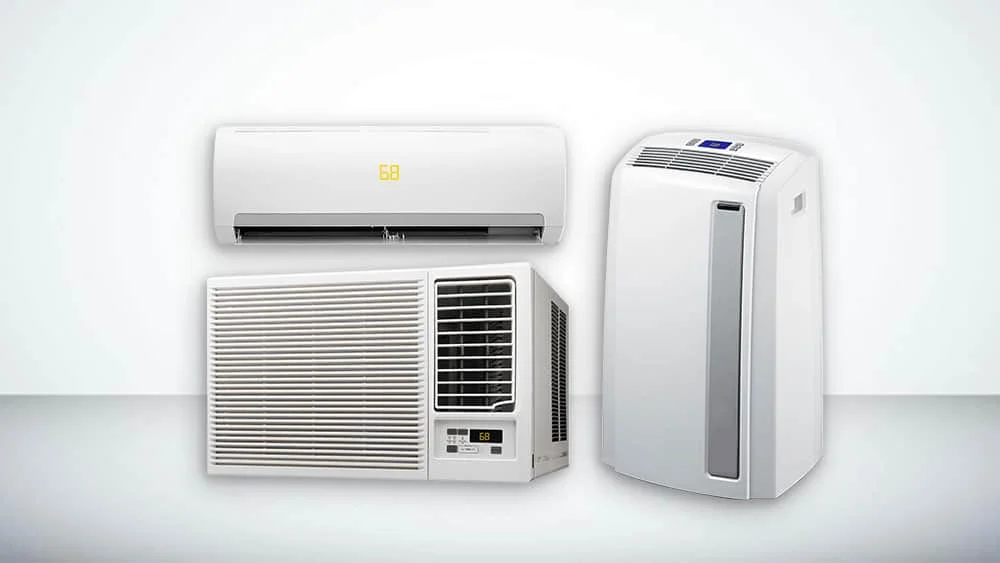
Ductless heat pumps come in many forms. You can find one that is appropriate for your needs.
Ductless Mini-Split Heat Pump
By far, the most common type of ductless heat pump is the wall-mounted mini-split heat pump. As they have a single indoor unit connected with an outdoor unit, they are also called single-zone mini-splits. The indoor unit can be mounted high up on the inside wall, spreading conditioned air across the room. The outdoor unit is usually placed right outside, opposite the indoor unit. A small hidden hole in the wall carries the pipes, and electrical cables are needed to connect both units. These pipes consist of a refrigerant pipe and a pipe to carry the condensed water from the indoor unit and expel it outside.
Ductless mini-split heat pumps offer many advantages over other types of heat pumps, including high energy efficiency and easy installation. Here’s how you can easily install your mini-split system.
Mini-split ductless heat pump is further divided into various types:
- Multi-Zone Mini-Split
This system features an outdoor condenser unit connected to multiple indoor air handlers, allowing independent temperature control in different areas or zones of the home.
The multi-zone mini-split is perfect for homes with varying heating and cooling requirements. It allows you to customize the temperature in individual rooms, ensuring maximum comfort while reducing energy use by not heating/cooling empty spaces unnecessarily.
- Floor Standing
A floor-standing ductless heat pump is designed to be placed on the floor, usually against a wall or in a less noticeable spot. It offers flexibility in placement, making it a great choice for spaces where wall—or ceiling-mounted options aren’t ideal.
- Ceiling Cassette
This mini-split ductless heat pump is installed flush within the ceiling, providing discreet heating and cooling without taking up wall or floor space. The sleek design makes it an appealing choice for homeowners who value aesthetics.
This unit distributes conditioned air evenly and operates quietly, ensuring consistent and comfortable temperatures throughout the area.
Window or Through-The-Wall Heat Pumps
Window heat pumps and through-the-wall heat pumps are small packaged units with all the components assembled in one single unit. They are smaller in size than mini-splits but can still pack a punch.
They are super easy to install. You can mount window heat pumps on window frames, and for through-the-wall units, you can make a hole in your wall and fit the system in there. But be careful; making a permanent fixture in the wall means that when you take your heat pump out, there will be a gaping hole that needs to be filled.
While installing these types of heat pumps, be sure to caulk out the air conditioner’s edges so no air escapes outside.
Related: A Complete Guide on How to Install a Window AC Unit in Your Room
Portable Heat Pumps
Portable heat pumps are compact units with their whole system packed inside a single container. They have two main types: single-hose and double-hose. A single-hose portable unit uses one hose to pull in and expel air. A double-hose unit has separate hoses for intake and exhaust, providing better efficiency.
The primary feature of this type of heat pump is that it is portable. It can be carried anywhere in the home, as long as there is a power supply nearby.
Advantages & Disadvantages of Ductless Heat Pumps
Advantages
- Installing a ductless heat pump is simpler than setting up a central system since it doesn’t involve ductwork.
- You can create multiple HVAC zones in your house using mini-split ductless heat pumps. This lets you customize the temperature for each zone or room rather than heating or cooling the entire house at the same temperature.
- Ductless heat pumps have higher efficiency as compared to ducted heat pumps. This is because 30% of energy loss is associated with ductwork.
Related: Ducted vs. Ductless Air Conditioning Systems
- Installing a ductless mini-split could qualify you for a rebate on your purchase. Electric utilities also provide tax incentives.
- Modern ductless heat pumps have DC inverter technology, which controls the heat pump’s energy usage. The compressor can then speed up or slow down accordingly, resulting in decreased power use.
- Ductless heat pumps can dramatically improve the air quality of your home. Air filters within the heat pump trap any contaminants in the air, removing dust and allergens.
Disadvantages
- Ductless heat pumps like mini-splits have a higher upfront cost. For larger homes with existing ductwork, replacing a central HVAC system is typically more affordable than setting up an entirely new ductless system.
- Ductless heat pumps have an indoor unit, which can sometimes clash with the room’s overall appearance.
- A multi-zone mini-split system requires more maintenance due to the increased number of indoor units. Each indoor air handler will require regular filter cleaning and refrigerant checks.
- Ductless heat pumps may not be ideal for extremely cold climates. While some modern mini-splits can operate in temperatures as low as -13F, not all are designed for such conditions. Homeowners in very cold areas often need a backup fuel source or an electric heating element. Here’s all you need to know about cold-climate heat pumps.
- Additionally, mini-split systems are best suited for small to medium-sized rooms. They may have difficulty evenly heating or cooling the entire space in homes with large open floor plans.
Making Your Ductless Heat Pump Smart
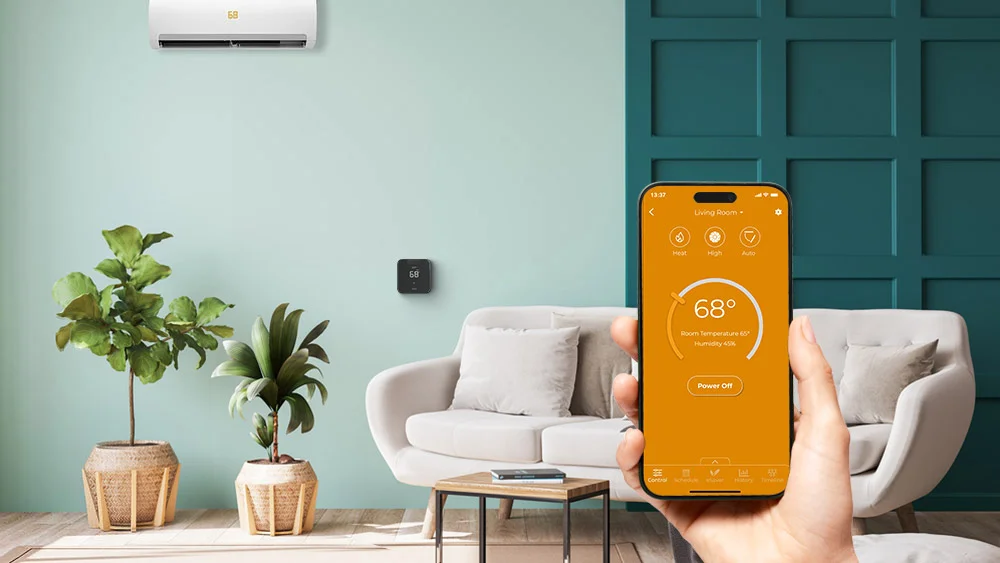
Smart mini-split thermostats give you much more control than the simple remote that comes with ductless heat pumps. They allow you to control your unit using your phone from anywhere in the world. Additionally, they provide a host of advanced features designed to maximize comfort and minimize energy consumption. You can equip your heat pump with smart features such as scheduling and geofencing. You can also track your energy usage and stay up to date on heat pump maintenance with timely air filter cleanliness reminders.
Cielo Breez Max, a mini-split thermostat, has an advanced AI feature called Comfy Max that takes climate control to another level. It makes your mini-split heat pump work like the Auto mode in central heat pumps. It works by intelligently adjusting your settings to maintain your pre-defined room temperature. When your room temperature exceeds or falls below your preferred temperature, Comfy Max automatically switches to the best possible settings to reach your desired comfort levels while preventing overheating/overcooling.
Your best choice to make any mini-split, window,
or portable AC smart. Enhance your comfort and savings.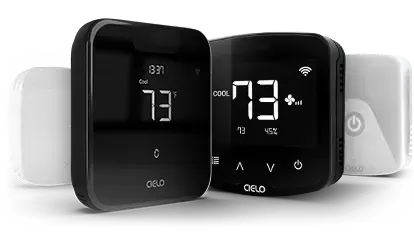
Efficiency of Ductless Heat Pumps
Energy consumption is one of the primary factors to consider when buying a heat pump.
But how is the efficiency of a heat pump measured?
It is obtained by dividing the cooling output by the heat pump’s electrical input. Doing this for the total consumption and total input for the cooling season gives the Season Energy Efficiency Ratio (SEER). The Department of Energy (DOE) has recently refined the testing procedure for determining SEER, resulting in the creation of SEER2, a more accurate scale to measure heat pump efficiency. Ductless mini-splits can achieve ratings between 15.2 and 35 SEER2.
For heating, efficiency is measured in HSPF or Heating Seasonal Performance Factor. It measures how efficiently a heat pump can heat your home during cold weather months. HSPF is obtained by dividing the heat output (in BTUs) by electricity consumption (in Watt-hours) during the heating season.
Like the SEER, DOE has also refined testing procedures for HSPF, creating HSPF2 ratings. Mini-split heat pumps can reach a maximum of 18 HSPF2 for heating.
Ductless systems also avoid energy losses associated with ductwork, as conditioned air is delivered directly to specific areas. This efficiency can lead to significant energy savings and lower electricity bills over time.
Choosing a Ductless Heat Pump for Your Home
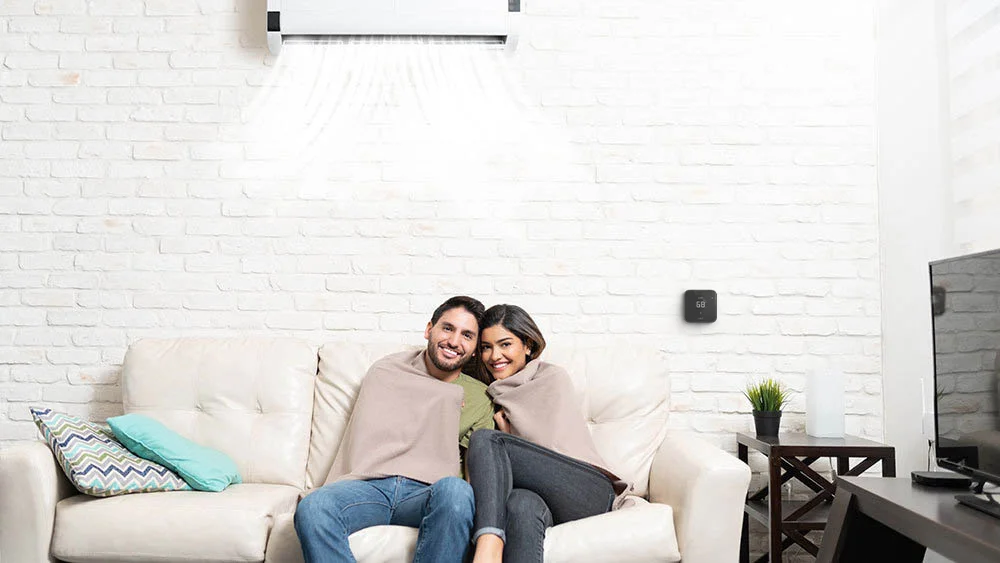
To be able to select the most appropriate unit for your needs, here are various factors that you must look into:
-
Heat Pump Size
Choosing the appropriate heat pump size for your space is crucial to achieving the right cooling and heating levels.
So, how do you measure the size of your heat pump? There are a couple of different ways to do this, but the most common and widely accepted method is to calculate the heat pump’s BTUs/hour.
A BTU stands for British Thermal Unit. In scientific terms, a BTU is the amount of heat required to raise one pound of water temperature by one Fahrenheit. Without getting into the nitty-gritty of it all, what is important for you is that a higher BTU rating of your heat pump means more cooling and heating power, ensuring a comfortable indoor environment.
You must think that going for a high BTU heat pump and being on the safe side, right? No, that is not the case! Although this sounds ideal, there are a few problems with this sort of thought.
A heat pump with more BTUs than your requirement only wastes energy and increases your energy bills. On the other hand, a small-sized air conditioner would not cool or heat your room as required and would run at full power all the time without the required effect.
Related: What Size Air Conditioner Do I Need?
-
Room Size
Knowing your room size is pretty simple; just multiply your room’s length and width, and you will have the area.
Even if your room is not a single cube and made up of different little spaces, you can still follow the same method. Simply divide the room into little chunks and calculate the area for each chunk separately. Then, add them all up together. Here is a useful room area calculator to help find out the area of your room.
The next step is to find the right number of BTUs for the room. As a rule of thumb, simply multiply the total area of the room by 25 to get the required number of BTUs.
With this figure, you do not need to consider other technicalities in your calculations. The factor of 25 already caters to the weather conditions, room conditions, and other factors. For example, in a room with a length of 9 feet and a width of 12 feet, the total area is 108 square feet. Multiplying this number with 25 gives us a total required BTU of 2,700. This is the heat pump capacity you should go for.
-
Sun Exposure
Another thing to keep in mind is the amount of sunshine that falls into your room. If the room is exposed to the sun all day, you will have to increase the required BTUs by 10%. If it is in the shade for a major part of the day, reduce it by 10%.
-
Room Height
While you must have calculated your room’s area by now, you haven’t considered its height yet. A room’s height also determines how effective a certain cooling capacity is.
A room higher than average will have more air that needs to be cooled or heated, requiring more power. This makes it vital to consider the height of your room also!
-
Room Insulation
Your room’s air stays cool for a longer period if you have thermally insulated walls. The same is the case with warm air in the winter, which allows you to minimize your air conditioning. If you have insulated walls in your home, you will probably not need a lot of cooling/heating power.
-
Humidity
A location with high humidity will generally feel hotter than a place with low humidity in summer. If you live in humid places like Florida or Louisiana, you might need a high BTU heat pump to remove the humidity.
Moreover, if you are planning to have a mini-split in your kitchen, increase the required BTUs by 4,000. A kitchen has additional heat sources, and that only increases the temperature of the room.
-
Energy Star Certification
Always check that your new heat pump has Energy Star certification. As discussed, Energy Star-compliant appliances are more energy-efficient and can save you money in the long run through reduced energy bills.
Is a Ductless Heat Pump the Right Option for Your Home?
A ductless heat pump is a great option for you in situations such as:
- If you have a home that lacks ductwork.
- You need a system to heat/cool only a specific area.
- You want an efficient system and want to save on bills.
- When you want a cost-effective solution without installing a whole-home HVAC system.
- You have multiple household members who prefer different temperatures.
Frequently Asked Questions
Can Mini-Split Heat Pumps Work In Cold Climates?
If you live in a very cold climate, be sure to check out the specifications and minimum operating temperatures of your heat pump. While some newer models can operate effectively in freezing conditions, not all are built for such extreme temperatures.
This is because it takes a lot more energy to transfer heat from a cold area to a hotter one. If the temperature difference between the two places is not as extreme, it is much easier to do so. With extremely cold outside temperatures, the common heat pump cannot extract enough heat from the air, thus becoming less effective.
Can a Ductless Heat Pump Heat/Cool a Whole House?
A ductless heat pump can heat or cool an entire house, but its effectiveness depends on factors like your home size, layout, local climate, and the system’s capacity. They are ideal for individual rooms or smaller spaces. However, in larger homes or areas with extremely cold winters, multiple indoor units or an additional heating source, such as electric heaters or a backup furnace, may be needed to maintain consistent warmth throughout the house.
What Is the Difference Between a Heat Pump and a Ductless Heat Pump?
The difference between the two is that the heat pump is a ducted system that uses ducts and vents to circulate conditioned air into your home. A ductless unit, on the other hand, delivers air directly where it is installed.
Related: Mini-Split vs. Heat Pump: Cost, Efficiency, and Features Compared
Are Ductless Heat Pumps Worth It?
Ductless heat pumps can be a valuable investment as they offer greater energy efficiency, customizable temperature control, and flexibility in installation. They are especially well-suited for homes without existing ductwork, smaller spaces, or those with specific heating and cooling needs. While the upfront costs may be higher, the potential savings on energy bills and improved comfort can make them a worthwhile choice.
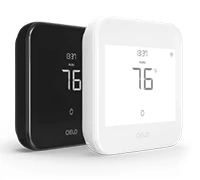

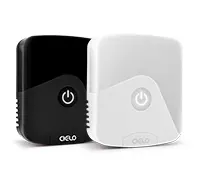
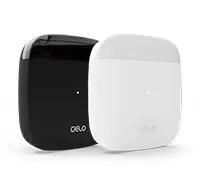

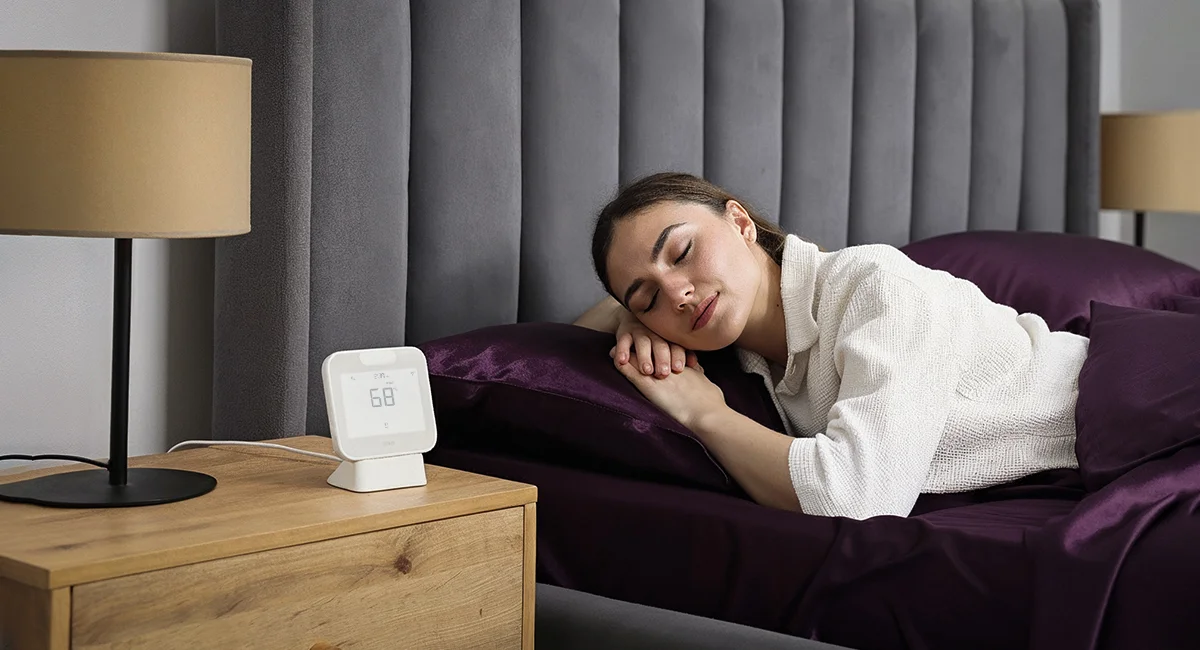
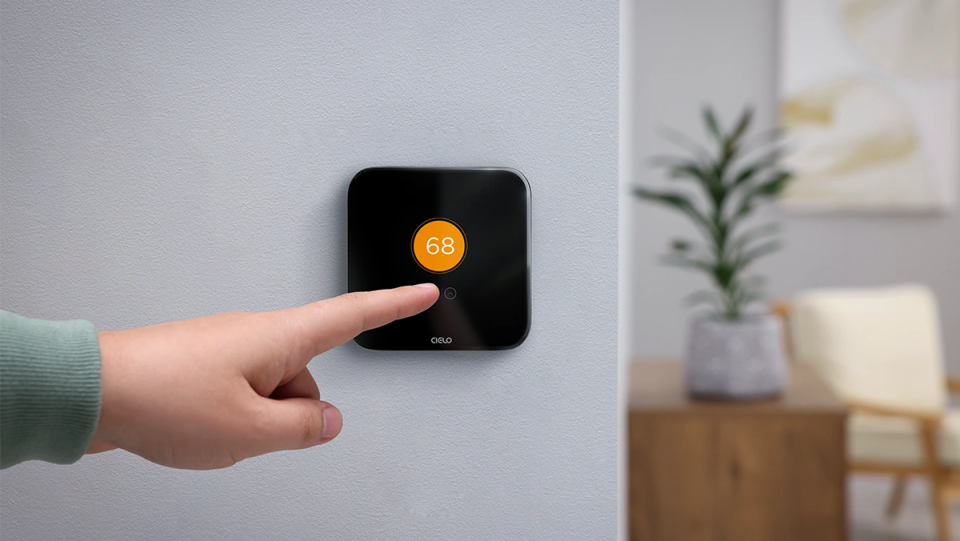
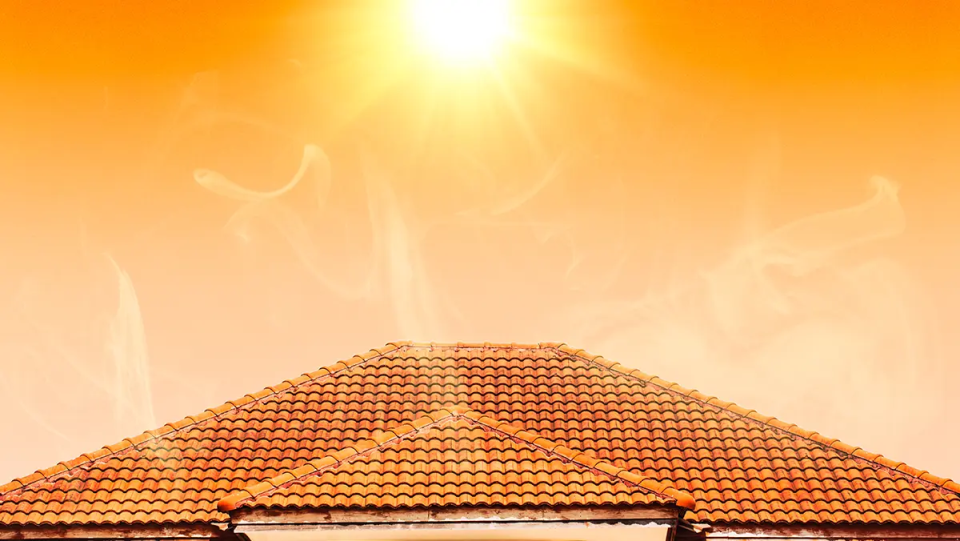
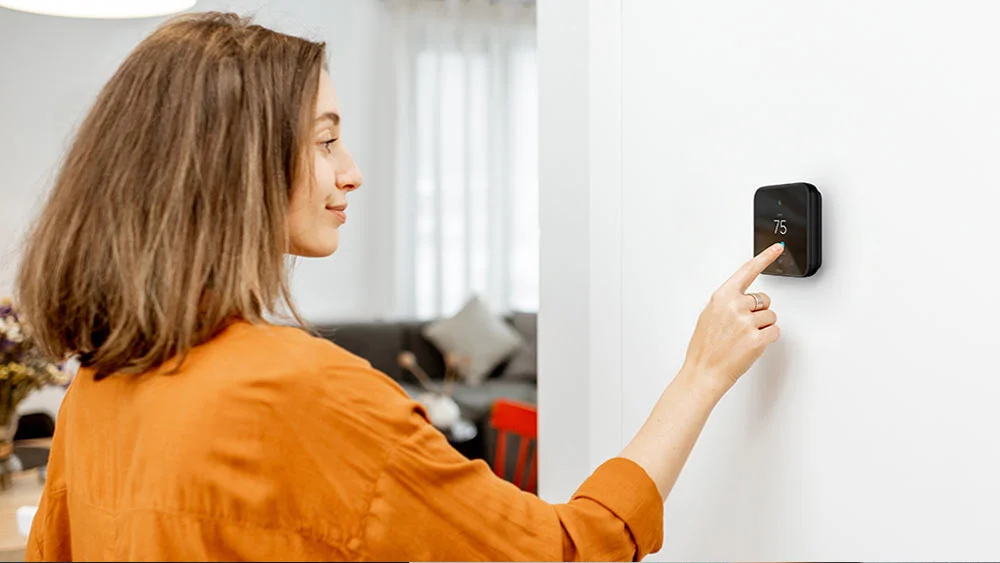
11 Comments. Leave new
Hot air rises, and cool air sinks. So installing a ductless indoor air handler unit near the ceiling would seem inefficient for HEAT (but efficient for COOLING). Can you comment on that?
If mini-split heat pumps are installed too low, they can’t distribute air around the room effectively. Installing the unit near the ceiling won’t necessarily affect its efficiency, as warm air will eventually circulate and warm the entire room. This also greatly depends on your insulation and how you are protecting your room from drafts.
Can a multi head heat pump run in Cooling on one head and Fan or Dry on another?
Yes, it’s possible.
I was looking to learn how the pump reverses in the cold season to provide heat.
They utilize a 4 way valve (called a reversing valve) that reverses the refrigerant flow to divert the heat from either outside or inside depending on the call for heating or cooling.
Your way of telling all in this article is genuinely pleasant, all can easily be aware of it, Thanks a lot.
This article was better than excellent. Thank you!
It is really a great and useful piece of info.Thanks for sharing.
I like the valuable information you provide in your articles.
I like this post, enjoyed this one appreciate it for putting up.